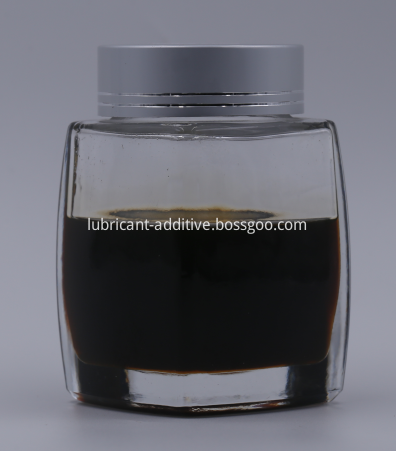In the civilian sector, electrical appliances refer to electrical appliances (ie, electrical appliances such as washing machines, televisions, and refrigerators). Academic definition: All electrical equipment that switches, controls, protects, detects, and regulates electrical circuits by automatically or manually turning on or off the circuit according to specific external signals and requirements, and continuously or continuously changing circuit parameters. For appliances.
From the perspective of division of disciplines, electricity, electronics, and electrical appliances all belong to the discipline of electrical engineering. The term “electrical engineering†comes from Japan. The gas is derived from the translation of Western languages. (At the beginning of western industries, the power machinery was driven by steam turbines, and later used to generate electricity. Therefore, electric power began to be referred to as industrial power, and electrical power is now used to refer to electricity). Electrical engineering is electric engineering.
1. Electrical: Electronics, electrical appliances and electricity belong to electrical engineering. It is an abstract concept. It does not refer specifically to a device or device, but refers to the entire system and the category of electronics, electrical appliances and electricity.
2. Electricity: Electricity is a strong part of electrical engineering. It mainly studies the provision of electrical energy (that is, generation of electrical energy for power generation systems), transmission (transmission of power lines), transformation (transformation of high and low voltages, transformers, circuit breakers, contactors); Divided into high-voltage power, voltage and power distribution;
3. Electronics: Electronics refers to the weak part of electrical engineering. It mainly deals with the processing and transformation of information; and electronics can be divided into two parts: electronic circuits and electronic systems. Electronic Circuits (Electronic Components: Electronic components for the manufacture of circuit boards and electronics, such as diodes, transistors, silicon, LED lamps. Electronic devices: an electronic functional device consisting of single and multiple circuit boards), electronic systems: The system of electronic equipment is weak electrical engineering system
4, electrical appliances: electrical appliances are specific equipment, electrical appliances in the narrow sense refers to the switch in the industrial field. In the civilian sector, electrical appliances refer to electrical appliances (ie, electrical appliances such as washing machines, televisions, and refrigerators). Academic definition: All electrical equipment that switches, controls, protects, detects, and regulates electrical circuits by automatically or manually turning on or off the circuit according to specific external signals and requirements, and continuously or continuously changing circuit parameters. For appliances.
Differentiating electrical engineering from the engineering point of view
1. Power generation project: Power plant construction (hydroelectric power, thermal power generation, geothermal power generation, etc.)
2. High-voltage transmission project: Responsible for high-voltage power distribution projects from power plants to various power grid regions, regions to provinces and cities, and urban areas. Above 3KV voltage.
3ã€High and low pressure engineering: Responsible for connecting high voltage power supply from the high voltage power supply in the urban area to the transformer of the unit, enterprise or community, and transformer engineering of high and low voltage transformation 10KV-3KV voltage
4. Strong power distribution engineering: It is responsible for connecting the 380V output from the transformer to the power distribution room and power distribution room of each power building and plant to the power consumption point in each power consumption unit. That is 380-220V voltage
4, weak current engineering: that is, electronic systems engineering, the combination of electronic equipment to form a system. Refers to all electronic systems engineering below 110V.
Electrical engineering and automation are generally divided into: power system and application electronics, that is, power electronics.
Power system and its automation: Into the power bureau but it must be a good school, otherwise it is not easy to find a job
Power Electronics and Electric Power Transmission: Strong and Weak Electricity is Transformed into Companies More and More Tired
It is a main Lubricant Additive Component with supplying the functions of antirust or rust preventative, which is suitable for wide industrial applications. This product line includes: Water Soluble Antirust Additive Tribasic Polycarboxylic Acid T730/736/T738 and Antirust & Rust Preventative Additive Package T2202.
T730/736/738 is a tribasic organic polycarboxylic acid, and is an ashless Antirust Additive & Corrosion Inhibitor in variety of water based liquid.
T2202 is a kind of compound additive developed for rustproof of metal surface based on the most advanced formula technology. It is compounded with various high quality rust preventative, Corrosion Inhibitor and film forming agent. Matching with different base oils, the product can formulate displacing type rust preventive oil, thin-film antirust oil, soft-film antirust oil, lubricating antirust oil in appropriate Base Oil or the mixture of solvent oil and base oil, with excellent anti-rust and anti salt spray effect.


Rust Preventative Anti-Rust Additive
Anti-Rust Additive,Rust Preventative Anti-Rust Additive,Lubricant Additive Rust Preventative,Antirust Additive Rust Preventative
Zhengzhou Chorus Commerce & Trade Co.,Ltd , https://www.cn-lubricantadditive.com